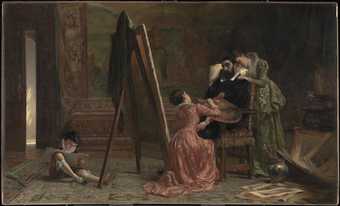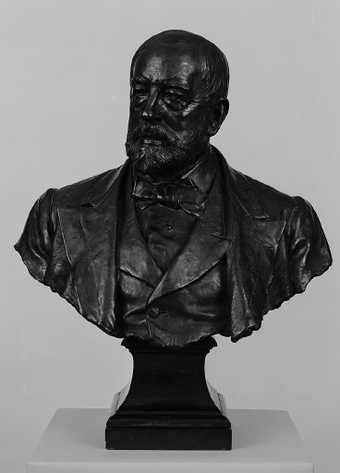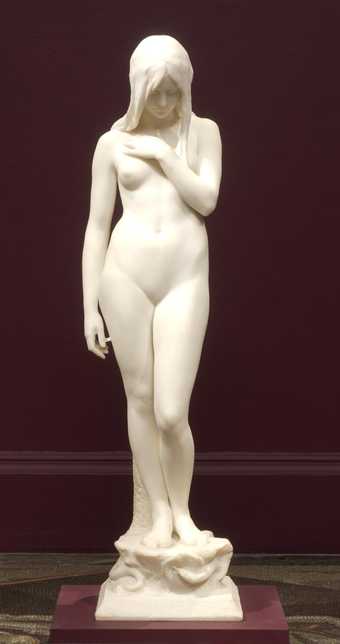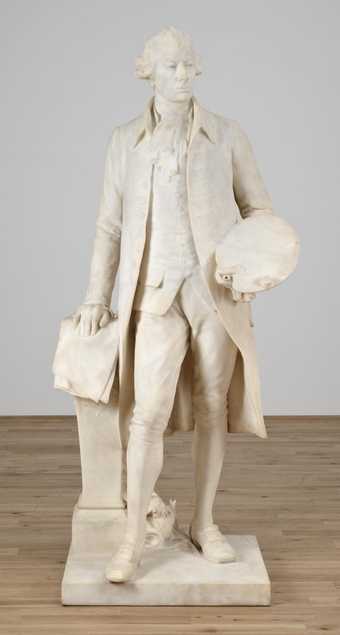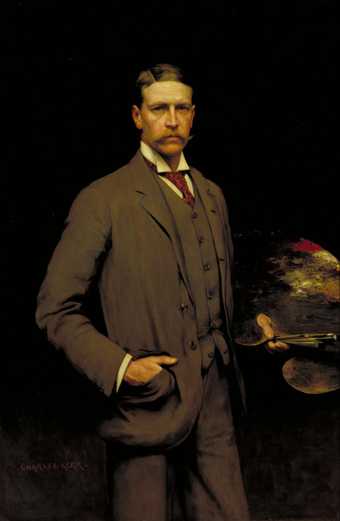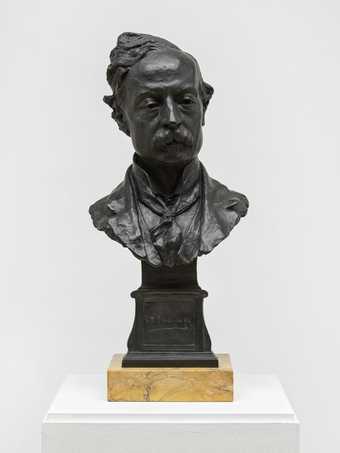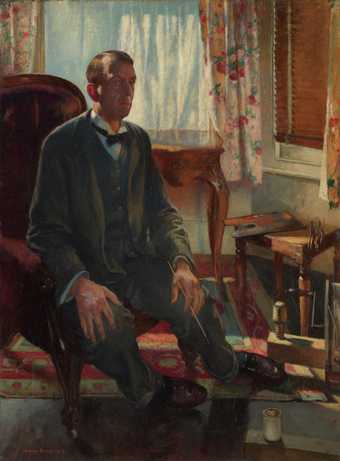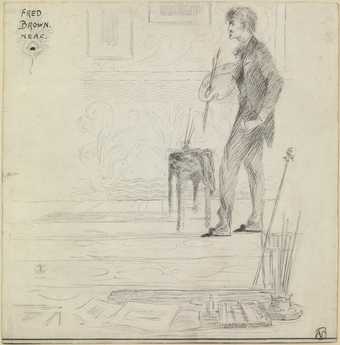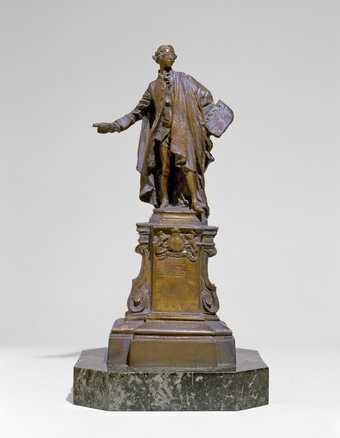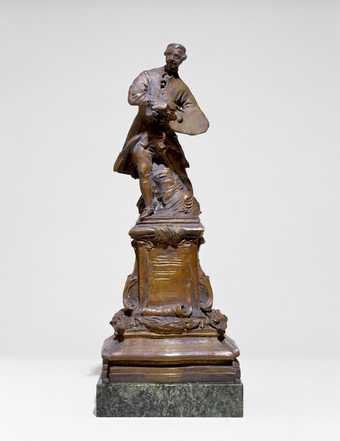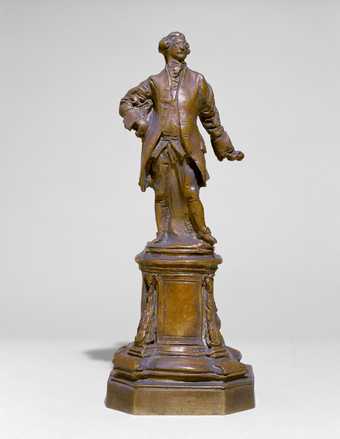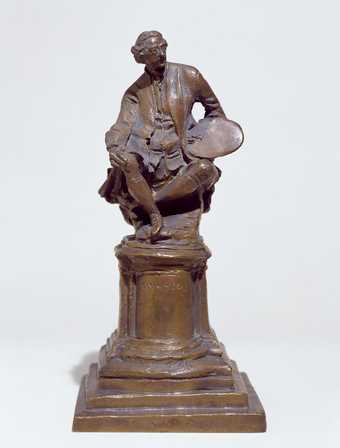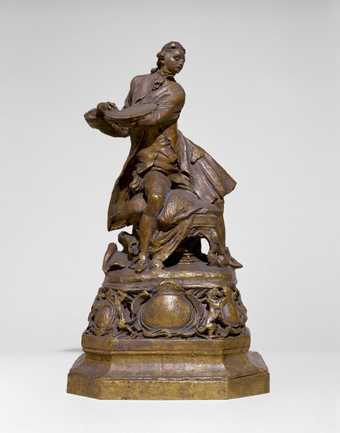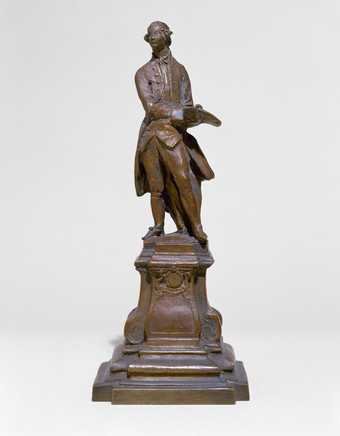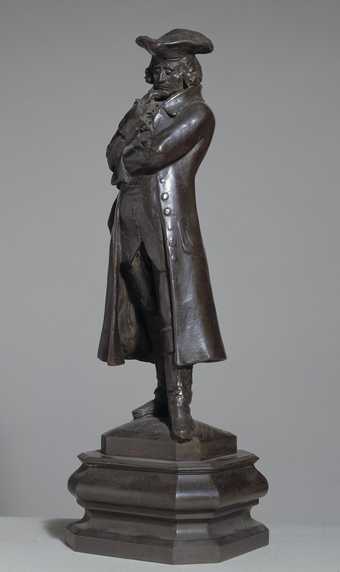
Not on display
- Artist
- Sir Thomas Brock 1847–1922
- Medium
- Bronze
- Dimensions
- Unconfirmed: 2743 mm
- Collection
- Tate
- Acquisition
- Transferred from the Department of the Environment 1994, accessioned 2000
- Reference
- T07664
Summary
Sir John Everett Millais, one of the best known and most successful Victorians painters, died in 1896. He had been a close friend of Sir Henry Tate (1819-98) and, from the outset, took an active part in his plans to create a National Gallery of British Art. Millais wrote to Tate in 1892, 'I would accept, without a moment's hesitation, the land offered for your gallery. The situation is splendid and open, with that grand old river in front. Nothing in Kensington would be as good. There will be grumblers, whatever you decide on. Don't listen to them. I am proud to think that my dear old friend, Sir William Harcourt, is the man who will have done this great service to the National art'. One year after Millais' death Tate told the Daily Mail 'Photographs of the building in a forest of scaffolding were submitted to the late Sir John Millais, my deeply regretted friend, shortly before his death, and he endorsed in pencil the two words "Quite satisfied"'. (John Guille Millais, The Life and Letters of Sir John Everett Millais, 1899, vol.2, pp.369-70)
A Millais memorial committee was founded shortly after Millais' death. The chairman of the committee was the Prince of Wales (later King Edward VII, 1841-1910) and Edward Poynter (1836-1919), who succeeded Millais as President of the Royal Academy, was appointed joint secretary. Although Millais had been buried in the crypt of St Paul's Cathedral, there had been no space to construct a funerary monument. Poynter proposed that a memorial should be erected in memory of Millais in front of the new Tate Gallery. Thomas Brock, one of the leading sculptors of public monuments, was commissioned to produce a statue of the artist. Brock was taught by John Henry Foley (1818-74) and had entered the RA Schools in 1867. Following frequent exhibitions of his work, he received numerous commissions to design busts, funerary monuments and public statues of politicians, scientists and members of the Royal Family.
The statue of Millias was installed in the garden on the east side of the Tate Gallery in November 1905. Despite the King's involvement in the project, frequently visiting Brock's studio to assess the progress of the sculpture, there was no formal unveiling. The statue, however, did not go unnoticed by the Press. The Pall Mall Gazette remarked on 23 November 1905 that it was 'a breezy statue, representing the man in the characteristic attitude in which we all knew him'. Millais stands, larger than life, before a studio stool, holding the two symbols of his profession, a paint brush and an artist's palette.
On 18 November 1962 the Director of the Tate, Sir Norman Reid, told the Ministry of Works that the presence of Millais in front of the gallery was 'positively harmful' and he proposed that it should be removed from the gardens. This was Reid's second attempt at negotiating a new place for the statue, having proposed nine years earlier to exchange Brock's statue for John the Baptist by Rodin. At that time the statue was under the custody of the Ministry of Works, which decided that it should remain in its prominent position. In 1996 English Heritage (the successor to the Ministry of Works) transferred ownership to the Tate, and in November 2000 the statue was moved to the rear of the building, by the corner of John Islip Street and Atterbury Street, close to the Manton entrance.
Further reading:
John Sankey, Thomas Brock, unpublished PhD thesis, Leeds University, p.167, pp.179-81
Heather Birchall
February 2002
Does this text contain inaccurate information or language that you feel we should improve or change? We would like to hear from you.
Explore
- objects(23,571)
-
- clothing and personal items(5,879)
- fine arts and music(3,982)
-
- paintbrush(90)
- palette(73)
- furnishings(3,081)
-
- stool(112)
- actions: postures and motions(9,111)
-
- standing(3,106)
- man(10,453)
- individuals: male(1,841)
- arts and entertainment(7,210)
-
- artist, painter(2,545)
You might like
-
John Haynes-Williams Ars Longa, Vita Brevis
1877 -
Sir Thomas Brock Sir Henry Tate
exhibited 1898 -
Sir Thomas Brock Eve
1900 -
Sir Thomas Brock Thomas Gainsborough, R.A.
1906 -
Charles Henry Malcolm Kerr Myself
exhibited 1899 -
Edward Onslow Ford Sir W.Q. Orchardson, R.A.
exhibited 1895 -
Henry Tonks Portrait of the Artist
1909 -
Aubrey Beardsley Professor Fred Brown
1892 -
F. Derwent Wood [title not known]
1916 -
F. Derwent Wood [title not known]
1916 -
F. Derwent Wood [title not known]
1916 -
F. Derwent Wood [title not known]
1916 -
F. Derwent Wood [title not known]
1916 -
F. Derwent Wood [title not known]
1916 -
Sir Alfred Gilbert John Howard, the Prison Philanthropist
c.1893–4

